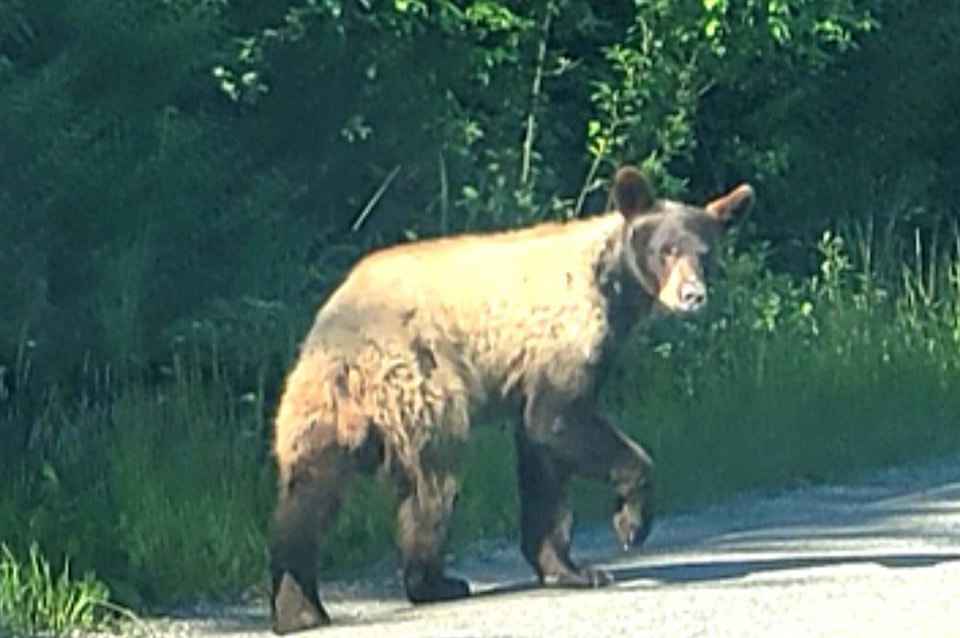Angela Laryea bubbles with excitement when she speaks about an animal she saw in the North Shuswap recently.
She was heading home to Lee Creek from work in Scotch Creek in the early evening of May 20 when she spotted a bear.
An unusual bear.
It was maybe 20 to 30 feet away and it was white, a bit shaggy, with a black head.
“When I first saw it I thought it was a sheep,” she said. When it turned around her first thought was that it was covered in snow, but she quickly realized the impossibility of that notion.
“When I think about it, he looked dirty, that’s why I thought he was rolling in the snow.”
Then she thought, maybe the bear was covered in pollen.
But no, not that either.
She said her car was quite close to the animal before it sauntered off.
It was a white bear with a black head.
Read more:
Laryea said she was told it was a Spirit Bear, which she didn’t know existed. She said she’s lived in the area for 30 years and has never seen anything like it.
She’s been telling everyone she knows about the bear and, finally, on June 1, someone else she knows saw it.
“My good friend’s daughter took that (photo) and couldn’t wait to share it with me as I’ve been telling the world.”
Laryea said the bear in the photo had shed somewhat since she last saw it, but she’s assuming it’s the same bear.
She hopes she’ll have the good fortune of seeing it again.
Although initial calls around the area and to the conservation office haven’t yet produced further information on such a bear, the internet’s bear.org uses the name Spirit Bear and Kermode bear interchangeably. Those bears, however, are pictured as all white and it states only about 100 of them remain. Laryea said she’s seen a Kermode bear before and the one she saw looks different.
“Most Spirit Bears live on Princess Royal and Gribbell Islands along the rainforest coast of British Columbia,” states the bear.org website. “They are considered a subspecies of black bears called Kermode bears (Ursus americanus kermodeii). About 20 percent of the bears on those islands are white; the rest are black. On the mainland, the percentage of white bears drops off drastically with distance from those islands.”
Read more:
newsroom@saobserver.net
Like us on follow us on and subscribe to our daily .



